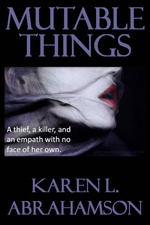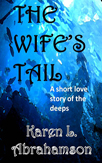Free Fiction
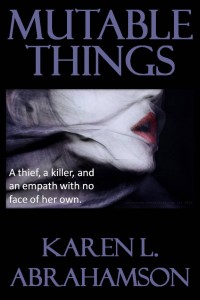 This week will be the start of something new : For the rest of the year I’ll be publishing my urban fantasy novel Mutable Things as a serial novel with 1-2 chapters a week. I hope you enjoy this novel of an empath who must conduct a murder investigation while her face and form change to meet the desires of the men around her.
This week will be the start of something new : For the rest of the year I’ll be publishing my urban fantasy novel Mutable Things as a serial novel with 1-2 chapters a week. I hope you enjoy this novel of an empath who must conduct a murder investigation while her face and form change to meet the desires of the men around her.
To read the first two chapters, click HERE.
Living like a Writer: Guilt, and How I Spent My Summer Vacation
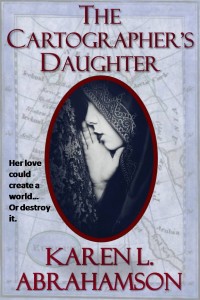 This past summer I had the ‘interesting’ experience of living like a writer. My day-job contracted work dried up and I basically had no work for July and August – except my writing. Nothing to do except sit in the sun, walk my cats (yes, on a leash), and the business of writing. Sounds like a lovely dream, doesn’t it? Yes, it was, but it also involved a heck of a lot more discipline and work than most people would have thought. And that’s why I’m writing this post because living like a writer isn’t just sitting staring out a window and typing when inspiration strikes, the business of being an independent writer requires deadlines and non-writing work and most of all, an awful lot of self talk. So what did my writing summer entail?
This past summer I had the ‘interesting’ experience of living like a writer. My day-job contracted work dried up and I basically had no work for July and August – except my writing. Nothing to do except sit in the sun, walk my cats (yes, on a leash), and the business of writing. Sounds like a lovely dream, doesn’t it? Yes, it was, but it also involved a heck of a lot more discipline and work than most people would have thought. And that’s why I’m writing this post because living like a writer isn’t just sitting staring out a window and typing when inspiration strikes, the business of being an independent writer requires deadlines and non-writing work and most of all, an awful lot of self talk. So what did my writing summer entail?
1. Setting Goals – I knew in June that my contract work was going on hiatus, so I spent some time planning. I also (thankfully) spent a wonderful few days at the Think Like a Publisher workshop put on by Dean Wesley Smith and William Scott Carter where I developed an even more detailed set of goals for my summer. The thing that was interesting for me, is that the plan wasn’t rocket science and yet I’d had a heck of a time setting as detailed a plan for myself. Critical to the goals was making sure there was time for both writing and the business of writing. Setting this plan was as simple as creating two columns on a piece of paper, one with the writing goals and one column for the business of writing goals. The writing goals came first, but just having all the goals written down gave me a sense of clarity and I could plan my months ahead easily.
2. Setting up a schedule- I’m used to this, because being self employed, if I don’t set up a schedule things like my writing will never get done. My summer writing schedule involved getting up every morning and writing for at least two hours and possibly more depending on what I was working on, or where I was in the project. The schedule also built in reading time, exercise, social time and the BUSINESS.
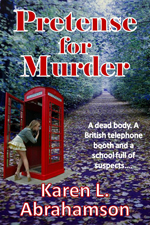 3. Learning the Technology – As I’ve ventured down the self-publishing road, I realized I needed to understand a lot more than how to structure a novel. I needed to know better how to format and publish books both in e- formats and also for print on demand. That meant learning how to use not only electronic publishing formats, but also how to use programs like InDesign and Photoshop with more ease.
3. Learning the Technology – As I’ve ventured down the self-publishing road, I realized I needed to understand a lot more than how to structure a novel. I needed to know better how to format and publish books both in e- formats and also for print on demand. That meant learning how to use not only electronic publishing formats, but also how to use programs like InDesign and Photoshop with more ease.
4. Learning the Business – This involved delving into a number of different areas, from how to blog more effectively (still working on that), to how to connect with others on social media (yes, I finally started to use Twitter though I still don’t fully understand it), and marketing.
So now that September is here, it’s time to review how I did and what I learned:
I accomplished my writing goals for the summer which were to complete a novel started I started in June, as well as two novellas. (Unfortunately one of the novellas wants to grow up to become a novel, so back to the drawing board on that one.) What did I learn? That my proclivity to write long still haunts me, but I can still maintain a schedule of writing even when I’m also involved with the business. This was a revelation for me, as I have spent the last few years struggling to maintain my creativity while also keeping up with the soul-sucking process of traditional marketing.
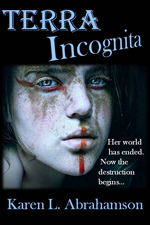 I accomplished my business goals as well: I had three novels that I wanted to have e-published as well as three short stories. All of these have been published. As well I wanted to have one novel published in print on demand. I actually achieved more than this and managed to have three novels approved and available for POD.
I accomplished my business goals as well: I had three novels that I wanted to have e-published as well as three short stories. All of these have been published. As well I wanted to have one novel published in print on demand. I actually achieved more than this and managed to have three novels approved and available for POD.
I updated my websites and found better ways to display my books. I established direct sales bookstores for my print publications and went through the hassle of obtaining ISBNs from the Canadian Government for my print books. I arranged for the development of a specialty website to fit with a series of fantasy books I write.
All of this filled my days so that aside from an hour or so exercise every day, I really wasn’t laying around in the sun. Better for my skin anyway, I suppose.
But perhaps the biggest accomplishment this summer was learning what it takes to be a writer, both financially and mentally. Financially, it meant that my spending had to cut right back, because I didn’t want to dig too deep into my savings. Mentally it meant that I had to recognize the legitimacy of what I was doing. I was writing. I was in business. But you know what? Even knowing that I was working at something all day at least five days a week (and usually seven) I still experienced a strange phenomenon: Guilt.
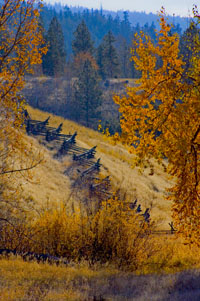 Guilt that I could be doing something I loved so much, while everyone else still had to go to work. And I wasn’t on vacation! Now that it’s September and my contract work is back in full swing, I really would love to go back to dealing with that guilt again. Now to set goals for the winter (and hope my contract work dries up again next summer).
Guilt that I could be doing something I loved so much, while everyone else still had to go to work. And I wasn’t on vacation! Now that it’s September and my contract work is back in full swing, I really would love to go back to dealing with that guilt again. Now to set goals for the winter (and hope my contract work dries up again next summer).
Being In the Moment
I recently had a spate of medical tests that involved injected dyes and C.T. scans. There I was, laying on this human-sized platter waiting to get dragged through this donut-shaped machine with multiple monitors and IV tubes and straps etc. hanging from spider-like ceiling beams to snake into my arms. It was all a new experience for me and not one I particularly liked, but the newness shocked me into taking heed of all the sensations and what was going on. It reminded me of the importance of being in the moment for writers.
I’ve always been taught that being in the moment involves being ‘present’. That means that you are fully aware of what is happening to and around you, including all of your bodily sensations. It is not allowing all the thoughts about where you want to be and how to get there, or the thoughts of where you were and your various regrets, to get in the way of attending to where you are.

Sounds like a simple concept, but it’s harder than you know. Try going for a walk and just attending to the feelings in your body and your surroundings. Don’t be surprised when you come-to thinking about what to cook for dinner tonight, or your job, or the blog you need to write for next week. It’s a lot like suddenly becoming aware you’ve almost arrived at your destination and for the life of you, you can’t recall the driving. You’ve totally zoned out and as a result you’ve missed the scenery along the drive, or the birds in the trees, or the scent of an unusual flower. Or life, for that matter.
All of us do this. We’re so incredibly busy running from issue to issue and task to task in our lives that we feel we HAVE to double and triple multitask in order to get everything done. Heck, I do this knowingly every time I go for a walk and try to work through a plot problem.
As a writer we need to be aware of this tendency and to work on being in the moment. If we do so we can find the marvelous little details, or the glimpses of the human condition that can make our writing richer. From my time on the human platter I’m going to remember the burn of the dyes as it moved through my blood stream and the taste of hot copper taste on the back of my tongue. They’ll appear somewhere in my writing, because being in the moment, I noticed them.
That Research Thing
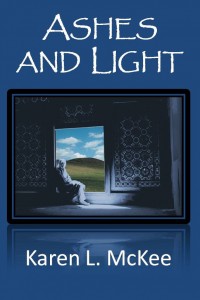 Readers of my books set in Afghanistan or Portugal and Burma often ask me how I got the details right. Of course the answer is research, and in all truth I can’t say that I got all the details right, but for me to write I have to have a sense that I have enough knowledge of the place and the culture to write it correctly, or as close to correctly, as I know how. Same goes for a particular time period or a specific piece of technical knowledge. This blog is about how I go about building the knowledge so that when I sit down to write it flows out of my hands.
Readers of my books set in Afghanistan or Portugal and Burma often ask me how I got the details right. Of course the answer is research, and in all truth I can’t say that I got all the details right, but for me to write I have to have a sense that I have enough knowledge of the place and the culture to write it correctly, or as close to correctly, as I know how. Same goes for a particular time period or a specific piece of technical knowledge. This blog is about how I go about building the knowledge so that when I sit down to write it flows out of my hands.
1. Reading: I read about what I want to write about. I read fiction that gives me a flavor of how other people write about a location. I read non-fiction accounts, memoirs, biographies and histories. These both allow me to pick up the nuggets these writers gleaned about the place or culture. I’ll pick up cheap coffee table books from remainder tables at book stores just so I can look at the photos. This often fuels my sense of place. I haunt the history and geography sections of used book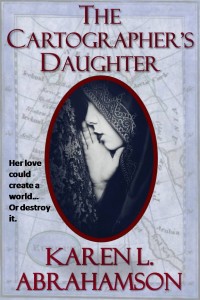 stores like Powell’s to find relevant writing about the place or timeframe, like for 1400’s Portugal for my upcoming book, The Cartographer’s Daughter. I’ll read the coffee table book if something captures my imagination. For example, I was living in Thailand and saw a small coffee-table book about Burmese Puppets. I picked it up and what I read spurred me to want to write a story about the puppets – I know, it’s a ridiculously esoteric subject – but I read that book from cover to cover and used it as a jumping off place to identify other information I needed to know.
stores like Powell’s to find relevant writing about the place or timeframe, like for 1400’s Portugal for my upcoming book, The Cartographer’s Daughter. I’ll read the coffee table book if something captures my imagination. For example, I was living in Thailand and saw a small coffee-table book about Burmese Puppets. I picked it up and what I read spurred me to want to write a story about the puppets – I know, it’s a ridiculously esoteric subject – but I read that book from cover to cover and used it as a jumping off place to identify other information I needed to know.
2. Maps: I’m a huge fan of maps. Maps give a me a sense of location and perspective. I recall traipsing around Venice, and it was the maps with the bird’s eye view that I first looked at when I arrived, that stopped me from ever getting totally lost in the maze of streets, canals and alleys. The same map put into perspective where Marco Polo’s house was and how that location within Venice might impact his view of the world. Maps let you identify potentialities in the location and they also show specific locations for events in your stories. Maps, I find, are an inspiration.
This is especially the case in writing historical stories, because maps not only show you the landscape back then, but they also tell you a lot about the culture, belief system and world view of the people. I’ll talk more about maps in a later blog.
Similar to historical fiction, when the story is a fantasy set in a fantasy landscape, I make maps up. Knowing where things are located and having place names in your head, allows you to build histories around those landscapes which are so important to making fantastical places real. It also forces you to think how long it would take to get from point A to B and about how the landscape would impact the characters who live or travel there.
3. Talking to people: Talking to people who are experts in their fields can help to get the details right. It can also be a source of inspiration with those odd facts that are so obvious to the experts, but no one else is aware of. These are jewels for writers, because they let readers in on the secret language of whatever this specialty is.
When I was writing about the Burmese puppets I had the good fortune to travel in Burma(Myanmar) and made a point of going to every puppet show in every 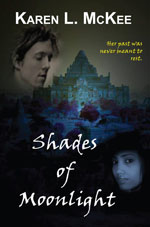 town I travelled through. I made arrangements to interview the owner of one of the shows in Mandalay who spoke moderately good English and he referred me on to another man who made the puppets. It turned out this kind man was an ex-surgeon and spoke excellent English. He had been instrumental in providing information to anthropologists doing research on the puppets and kindly showed me how they were made, demonstrated some of them for me and even gave me a precious manuscript he had received from the anthropologists so that I could photocopy it for myself. You have to understand that at the time Burma was almost a closed country and that he was taking a risk even talking to me, a writer. Those items I treasure to this day and those unbound pages still have a place of honor on my bookshelves. They were also critical to a couple of fantasies and Karen L. McKee’s Paranormal Romance, Shades of Moonlight.
town I travelled through. I made arrangements to interview the owner of one of the shows in Mandalay who spoke moderately good English and he referred me on to another man who made the puppets. It turned out this kind man was an ex-surgeon and spoke excellent English. He had been instrumental in providing information to anthropologists doing research on the puppets and kindly showed me how they were made, demonstrated some of them for me and even gave me a precious manuscript he had received from the anthropologists so that I could photocopy it for myself. You have to understand that at the time Burma was almost a closed country and that he was taking a risk even talking to me, a writer. Those items I treasure to this day and those unbound pages still have a place of honor on my bookshelves. They were also critical to a couple of fantasies and Karen L. McKee’s Paranormal Romance, Shades of Moonlight.
If you can’t talk to the people, you might be able to get in touch via e-mail. When I was writing my Afghan novel I was in touch with past foreign correspondents, and members of the military that friends helped me locate.
Writing about other cultures, it’s also important to talk to people of that culture. For my Afghanistan book I spent a number of coffee and lunches interviewing a lovely Afghani woman who was brave and interested enough to talk to me about woman in her culture, about her faith and about what was happening in her country, as well attitudes amongst her people towards the foreigners ‘liberating’ her country. These attitudes shaped my characters. She also provided me with small phrases and legends that are common in her country. These are also gold because they allow you to build in the real words and beliefs of the people.
4. Old Newspapers: If you are writing about a historical period where there were newspapers, or you are writing about another part of the world and can get newspapers in a language you can read from that time period, this can be an invaluable way to get a sense of the background events that were occurring in the location at the time you are writing about. Nowadays many major newspapers have their archives available on line. Reading the old papers can also spur inspiration regarding events that are reported and how your characters might have been involved or touched by the event, and can also give you a sense of fashion and language used ‘back in the day’. For example, a story about how bats had taken over the old Regina City library back in the 1920s led to an opening chapter of the first adult novel I ever wrote.
5. Library and Internet research: Having a local librarian as an ally can be a boon, because a librarian can suggest you try looking at books in areas you might not have even thought of. University libraries are also superb resources. When I was writing about Burma I wanted a specific book about the magic systems and the animistic spirit worship. There’s been very little written on the subject at the time, but there was one fairly comprehensive anthropological study. I found the book (a very old, falling apart version) and ended up photocopying the whole thing so I could have it available as a resource.
The internet can be helpful in finding old journals and photos of locations taken by other travelers. Blogs can be a wonderful source of information, both about the place and about the traveler’s reactions to it. I used old articles in The Economist and old travel journals about a very rough ride through northern Afghanistan to bring realism to my novel set in that country.
6. Travel: I try to travel every few years and I don’t go to resorts and I don’t do tours. I go to places I think I might want to write about and I spend my time poking around the back streets and absorbing the feel of the place. I spend time talking to people to get a sense of people’s attitudes. I’ll sit in a park and let people come to me. I talk to waiters and taxi drivers and vendors on the street – often with very limited communication skills because we speak different languages, but enough to get a sense of small bits of their realities—like the

woman who worked in one city in Peru, but who had left her children behind in another city because there was better money to be earned where she was – a hard economic choice the country’s situation had forced on her.
Before I travel I think about where I want to go and what I want to see and a plan a general itinerary around that, but I also let fate take me where it will. There have been times when a chance meeting, or a wander off the beaten path, has allowed me to find something wonderful that takes the potential writing in a whole new direction.
So research for writing isn’t so much simply gathering facts and then writing about them, it’s about immersing yourself in a location or situation (even if you’ve never been there), so that when you sit down to write the place itself inspires what you are writing. I recall my Afghan book as one of the most difficult books I have ever written. Why? Because I had so many false starts on the book. I would start and get a chapter in and realize I wasn’t ready to write that story yet because I wasn’t filled with the sense of place and the culture. So I kept on researching and wrote other books and then one day I sat down and the book poured out wiht all the wonderful details in just the right places. And yes, there are probably errors in the book, because in a war-torn country there are places so remote that you just can’t get the information. So you know what? There are things in that book that arose purely from my imagination.
Because it’s fiction, folks. Remember that. Fiction.
Magic and Reality: Everything comes at a price
 I’ve been thinking about magic systems a lot lately because I’ve been working on novels that involve magic and I’ve been planning out book number two in the Terra Trilogy. I also happened to catch a bit of Jurassic Park last night and for the first time really heard the Jeff Goldblum character give his lecture about how the Jurassic Park scientists had come by their science too easily, and how everything – in their case the creation of dinosaurs—came at a price. In Jeff’s case he was foretelling the deadly price that was to come in the movie, but what he said resonates on many levels. Everything has to come at a price to characters, especially when it comes to magic.
I’ve been thinking about magic systems a lot lately because I’ve been working on novels that involve magic and I’ve been planning out book number two in the Terra Trilogy. I also happened to catch a bit of Jurassic Park last night and for the first time really heard the Jeff Goldblum character give his lecture about how the Jurassic Park scientists had come by their science too easily, and how everything – in their case the creation of dinosaurs—came at a price. In Jeff’s case he was foretelling the deadly price that was to come in the movie, but what he said resonates on many levels. Everything has to come at a price to characters, especially when it comes to magic.
This relates to the planning and the world-building a writer must do before they write their book. I recall when I wrote my first book set in the Cartos universe, a universe where god created both humans and older beings made not of clay, but of earth and the Creator’s blood. This gave them the power to Create and change, so they can rewrite the landscape of their world. But the power of almost gods has to come at a price, so what would be fitting? Sure, there would be exhaustion, but there has to be something more. Logically, the price has to relate to the magic, so Creation had to play into the price. In this case, use of the Cartos magic means they are taking power from the mother goddess, so the price is that they must repay that creation. Which means that after the use of their power, they desperately need sex, which repays creation with procreation. If they don’t have sex, lets just say bad things happen. It may sound funny when I talk about it, but think about the consequences. No wonder the characters are hedonists and generally bitchy. How would you feel with a case of lust that literally burns in your bones after you’ve used the magic? Think about the societal impacts that sort of magic might have. It plays big into my upcoming epic Fantasy, the Warden of Power, and equally as big into my dytopian Fantasy, TERRA Incognita, my Historical Y.A. fantasy The Cartographer’s Daughter which will be coming out in September and in my current Urban Fantasy Afterburn, all of which take place in the Cartos universe.
But the price of magic exists even when it isn’t quite as front and centre. Magical creatures pay a price for their power. The Fairy folk can’t touch iron. Vampires, by their very nature, are killed by sunlight. Werewolves lose total control once a month and have to live with the guilt they inflict on the people they kill. Zombies—well—they fall apart, and even Patricia Briggs’ Mercy Thompson character who seems to get off pretty lightly for being a shape shifter, is part of a race that has been almost wiped out because of their power.
In today’s commercial world, this need to ‘pay’ seems normal, because these creatures aren’t gods. They are creatures ‘imbued’ or, some would say, ‘inflicted’ with magic. So magic is not only their ‘specialness’ but it is also a burden to carry. After all, even the Cartos carry the burden of Creation and knowing that if they change the landscape, they change all the beings on it—including the humans with whom they intermarry.
As non-magical beings and, in my case, a writer, I think this is one of the key lessons perhaps Jeff Goldblum, and Michael Crichton, author of Jurassic Park, were commenting on. Yes, they were talking about scientists, but in today’s society we need to remember that everything comes at a price and not just at the grocery or the department store. Last night, in addition to Jurassic Park, I also caught a National Geographic special on Patagonia and Tierra del Fuego. The special talked about the huge decline in the penguin, parrot and albatross colonies and in the dolphin and sea lion populations due to the industrial fishing taking place in that part of the world. Night shots from space showed the lights of the industrial fishing fleets were brighter, and larger, than the lights of Buenos Aires. Think about it: The fishing fleets are larger and brighter than a major metropolis! And so the sardine and other fish populations are disappearing and so are the birds and the porpoise and the seals that feed on them. Many of the young birds starve to death because their parents have to travel so far (fifty miles or more) for food and can’t get back in time to feed the chicks.
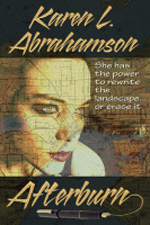 Many years ago, I read the wonderful fantasy novella by Larry Niven called The Magic Goes Away, about a world where all the magic had been used up. As I watched the Patagonia show last night it seemed to me that we are using up our own real magic— the funny little penguins , the rush of wings of the brightly colored parrots, the leap of the dolphin. When I read that book I was filled with a horrible sense of loss–the same feeling I had last night watching that show.
Many years ago, I read the wonderful fantasy novella by Larry Niven called The Magic Goes Away, about a world where all the magic had been used up. As I watched the Patagonia show last night it seemed to me that we are using up our own real magic— the funny little penguins , the rush of wings of the brightly colored parrots, the leap of the dolphin. When I read that book I was filled with a horrible sense of loss–the same feeling I had last night watching that show.
Unlike all those magical characters, we haven’t yet realized the price we’re about to pay.
Who Are These Readers of Which You Speak? Blogging as Social Marketing

I’m going to end this marketing series (well if something else comes up, I’ll add it later, but next week I’m going to start blogging about my writing) talking about blogging. Not that I’m an expert by any means, but blogging seemed like the kind of social marketing I could control and manage, so I’ve done regular posts since January. Those posts were about prepping for my trip to Peru, about my wild and wooly Bengal cats, about my trip to Peru and then about marketing. All of them have been fun to write and hopefully you’ve enjoyed them, too, but I wanted to spend this post talking about how blogging has worked in terms of social marketing and what I’ve learned over the past eight months.
Has blogging lead to an increase in traffic to my site? Resoundingly, yes, when I check the analytics. However whether it was the right kind of traffic, I can’t say. I’ve certainly been spammed more. I’ve also had more comments, especially during the Branding Your Book blog, and during my trip to Peru. But the latter came with pretty pictures, so I’m putting the traffic down to that and the fact that maybe people were interested in my misadventures in Peru.
I suppose any increase in traffic to your website is a good thing as long as your titles are front and centre on your website, but I’ve been doing a lot of thinking lately about who am I actually drawing to the website with my blog. I mean who are these people who come and check out what I have to say?
I can’t be sure who was reading my blog when I was prepping for Peru and when I was travelling there. Some, I know, were friends and acquaintances, or friends of friends. All good, because blogging is a social enterprise. But who has been reading my posts about marketing? I’d guess, from who made comments, most likely other writers. Are these my target audience? Well, for a marketing blog, I’d say yes. But this raises three thorny questions I guess I should have thought of way back when:
1. Why am I blogging?
2. Why do I have a website? and
3. Who do I want to read my blogs?
I’ll come clean here: I had never really given thought to having a website or blog or any other marketing matter until it became clear that, before acquiring a manuscript, New York editors were checking out new authors to see if they had an online presence. It was okay if you had a website. It was better if you had a blog and a following on twitter and facebook. With the advent of indie publishing, this presence became even more important as a means to draw people in so that they would consider your books. The website was the most important place to promote your books and writing. So my question is, if my website and blog are to promote my writing, are they attracting my intended audience of potential readers?
The answer? Maybe. Maybe a potential reader might be interested in book marketing, but I think not so much.
What might a draw a potential book reader in?
Here’s my possible list:
1. Topics of personal interest to them. A Y.A. reader of books like Twilight might be interested in blogs about teen romance. They might also be interested in books that take place in a high school, or books about loner characters because, let’s face it, we all feel alone in high school. Interest might also be there for blogs about the challenge of being strong and independent when social pressures push young people to be anything else.
2. Other topics that interest readers – Again, using Y.A. readers as an example, issues of social justice and fairness, possibly environmental issues, issues of social exclusion, dealing with boy/girl-trouble etc. This list may, or may not, be different for Fantasy readers. Blogs on characters who are loners and who have special powers. Blogs on magic systems or magical creatures might have equal appeal.
3. Topics related to your writing – While any of the above topics can be related to your novels, topics related to your writing would focus on matters that relate to how you write. For example, how you built the world you are writing in; writing about the research process and interesting information you come across; writing about your writing process and challenges.
4. Topics relating specifically to your books – this would include writing about the locales where your books take place; ideas that led to the book, or ideas that were considered and discarded; or more information about your characters.
5. Personal information – like my blogs about my cats, readers enjoy knowing more about you and what makes you tick.
So my blogs over the next while are going to focus on what I think readers might enjoy and not totally on my fellow writers. That said, I have to say one of the more inspirational blogs to me is one written by fellow author Matt Buchman who talks (inspirationally) about where he draws his inspiration from. His blogs are great reads for anyone, reader or writer.
So as a reader, what topics would you like to see blogs about? As a writer, what do you like to blog about?
Building Allies: Working with Libraries
In my last post I mentioned that libraries are an asset that can assist with promoting authors’ work if the books are in print. As libraries are also gathering electronic collections, this assistance may also help with building followers amongst e-book readers. I wondered how a writer or indie-publisher might build a relationship with their local library and contacted librarian (and indie author) Ryan Williams for his take on how writers might work with libraries. First of all, let me thank Ryan for giving us his time.
 1. How should (or can) a writer approach a local library about carrying their book? Does this work for Indie Authors as well?
1. How should (or can) a writer approach a local library about carrying their book? Does this work for Indie Authors as well?
Talk to them, show that you can be a partner in helping the library. Many libraries will take books as donations, but reserve the right to add it to the collection or not depending on their selection policy. Some libraries do maintain local collections and will add local materials, but that might not include your novel if that doesn’t fit the selection policy for that library. If you haven’t made a connection with your local library then all they have to go on are reviews (or lack of reviews). Honestly, Indie authors may encounter resistance from some librarians, while others will think it’s just great. You really won’t know until you talk to them.
 2. How can a local library help promote an author?
2. How can a local library help promote an author?
Standard disclaimer, libraries are going to vary quite a bit. The best idea is simply to go in and talk to the librarian. That might not be the person checking out the books, but it could be! On our library website for each location we list the library manager for each location, so sometimes with minimal research you’ll know who you want to talk to. Calling ahead, identifying yourself as an author and ask to set up a time to talk can’t hurt.
That said I don’t think I’d approach it as the library helping to promote the author. Instead I’d approach it as something you can do to help the library. Many performers, storytellers, jugglers, etc. work the library circuit and charge for their programs. Tell the librarian that you’d be happy to do a program and be prepared to pitch a couple ideas. It might be about your background or books, or that might be only a piece of what you’re talking about. It could also be about your trip to Burma and how that has influenced your writing, or a program for teen writers, or whatever you think about doing. You could charge or not, your decision, but by giving the library an exciting program they’re going to be more enthusiastic. Given library budgets, you could even say that you’ll waive the fee. Libraries may produce publicity for the program which includes your author bio/pic/covers, etc (that you’ve provided).
It also can’t hurt to partner with a local bookstore to sell copies of your book at the event.
And after all of that, it’s possible no one will come. But if you’ve got an interesting program that isn’t exclusively focused on self-promotion it’s far more likely that library staff and patrons will be interested in coming.
3. Aside from asking a library to carry their book, what can a writer do to work with local libraries to promote their books?
A book sitting on a library shelf isn’t necessarily any more noticeable than any other book online. But if your local librarian loves your book? Then she’s going to hand-sell that to anyone that she thinks might be interested. Librarians do book talks and reader’s advisory all the time. If you’ve presented an engaging program for your library, if you’ve been a helpful partner, and if the librarian actually likes your book? Well, then you’ve got one of the best possible advocates for your books.
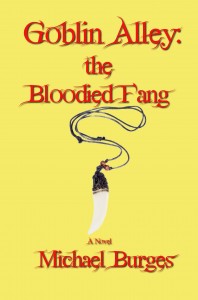 4. What success have you had with working with local libraries?
4. What success have you had with working with local libraries?
Since I work in the local library I haven’t wanted to do anything that suggests I’m using my position to promote my business, so I haven’t asked for the library to add my indie books. There are a couple traditionally published books that have my shorter work in them, like the Star Trek anthology, but otherwise none of my work is listed in my library. If patrons independently suggested the library add copies that’d be one thing, but I’m not going to use my position to get my books into the library.
I have, however, used my knowledge to benefit our patrons and present programs. Sometimes that’s working with other authors. I’ve got a program coming up where I’m going to teach local folks how easy it is to publish their work on the Kindle and other platforms. I think it’ll be a lot of fun but it’s not going to be about my work beyond mentioning that I do have experience working with these sites.
 5. For an Indie Publisher, how should they approach libraries? Is this different than for authors?
5. For an Indie Publisher, how should they approach libraries? Is this different than for authors?
A publisher is a publisher. It’s a business. I could easily see Glittering Throng Press (my publishing business at www.glitteringthrongpress.com) sending out book catalogs to libraries just like I’ll send to book stores. I’m also interested in co-op displays in libraries. I don’t think many publishers are doing this right now with libraries, but as book store spaces shrinks I could see a publisher doing an co-op placement where they provide the books to the library at no cost in exchange for placement. Free books for the libraries, better exposure for authors, and a benefit for readers. I’d also like to approach Friends of the Library groups about selling e-book gift cards as a promotion tool for them, give them a deep discount on the cards, and have a little desk display or something with the cards for them to sell. There’s over 9,000 public libraries in the USA, that’s a lot of potential avenues to promote material. I think going forward into the future libraries are going to be more critical at generating buzz and interest in an author’s work.
So yes, I think there’s a difference in approach between publishers and authors. An individual author is making a one-on-one connection with librarians and library patrons, while a publisher is developing more of a business relationship with the library.
6. And beyond the libraries, how successful have you found the loss leader approach to selling your fiction? Are there other methods of promotion you’ve tried and how have they worked for you?
I strongly agree with folks like Dean Wesley Smith when they say that the best promotion is writing more. As a writer that should be our first priority. You’ve got to keep the material flowing so folks can find more material. Kristine Kathryn Rusch was just talking about this in her recent post on Comparisons (http://kriswrites.com/2011/08/10/the-business-rusch-comparisons/), any promotion you do creates a short-lived blip in sales. It can become very time consuming if you’re spending all your time trying to keep that ball up in the air.
For a year I released a new e-book each week. Most have been freely available online for a week at a time on my publisher site, while selling as e-books. One of the best things about that was simply getting out new material each week. I’d originally planned on continuing that all this year but I’ve recently decided to refocus my priorities. So now with short fiction I’m putting more of an emphasis on sending stories out to traditional professional markets, places like Analog Science Fiction or The New Yorker. If a story doesn’t sell after making the rounds to the major markets I’ll still release it as an e-book, because I believe in the stories I write. Just because a story doesn’t sell to a major market doesn’t say anything much about the quality of that story. I’d just rather get paid pro rates first, and gain the exposure of having the story out, and then put it up as an e-book afterward. The next story coming out is in On Spec Magazine, I believe in their Summer 2011 issue, so I’m looking forward to that, it’s a great magazine for speculative fiction.
In the meantime I’ll continue to feature various stories on my publisher site, and in the process I’m revisiting blurbs and sometimes covers, updating the e-books before the story gets featured. The first I’ve done is “Alley Cat” by Michael Burges, which is a fun story set in the same universe as my first Goblin Alley novel, Goblin Alley: the Bloodied Fang. I don’t know if I’ll get one up each week, but I plan to update fairly often.
I have tried other methods. One of my Filming Dead Things novelettes, Farm of the Dead Things by Tennessee Hicks, is available pretty much everywhere for free and includes sample chapters of the first novel in the Dead Things series. That’s been downloaded thousands of times and the sales of the series have increased since it went free. The second novel in the series, Dreaming Dead Things, is due to be released in the next few weeks and I think that’ll have an even bigger impact just because there’s going to be more available for the folks that enjoy the series. Next year I’ll follow up with the third novel, Killing Dead Things.
Beyond loss leader sorts of experiments I’ve maintained an active presence on Twitter (ryanmwilliams) and Facebook where I have public pages for each pen name. I don’t know if those lead to more sales, I think the writing has more to do with sales, but Twitter and Facebook do provide an opportunity to engage with readers. I enjoy that and enjoy following the feed from other folks. Lately I’ve been exploring Good Reads more and want to do more with that than I’ve been doing. Plus I have websites for each pen name and my publishing site. I look to the sites as avenues for readers to find out what’s available, and what they might want to read next. Particularly the series, I want it to be clear what’s next.
I don’t have any hard data to show whether or not social media, websites, or message board participation increases sales. And I don’t worry about it. I do those things because I enjoy it, not because it increases (or not) sales. I do know that they don’t help me get more written (having the opposite impact), so I have to watch that and make sure I get my words in.
Bottom-line on promotion: write more!
Thanks for asking the questions, I’ll stop now before I hit 2,000 words!
And thank you, Ryan, for this wealth of information.
Ryan Williams has worked for over twenty years in libraries, currently managing a small town library in Tenino, Washington. Like Dalton Hicks from his Goblin Alley series (written as Michael Burges), he runs long distances, working up to ultra-endurance events. He also hopes to ride the Tour Divide mountain bike race from Canada to Mexio. He writes a wide variety of fiction, including urban and contemporary fantasy, science fiction, horror, and mystery under several different pen names. He has sold stories to On Spec Magazine, Star Trek: Strange New Worlds and Alien Skin Magazine. He holds a master degree from Seton Hill University in writing popular fiction, and as a member of the Oregon Writers Network, Michael also graduated from the master class taught by bestselling authors Dean Wesley Smith and Kristine Kathryn Rusch. Find him online at www.ryanmwilliams.com or on Twitter as ryanmwilliams.
Free Fiction
A new, ongoing feature of my website is a free fiction page that will offer free short stories and/or novel chapters. For the first free fiction, here is my Short Story The Wife’s Tail.
The Miscellaneous File: What else you can do to get your books to market?
To recap this series to date, I’ve talked about blogs and a little about reviews. We’ve heard about using social media with the caution that none of these should take time away from your writing, and we’ve also discussed books and branding and getting ready for the market. Sounds like we we’ve covered a lot, but there are still a few other things that an indie publisher can do to help get their books to market. That’s what this blog is about.
First of all, I’m going to say that although e-books seem the major way authors/indie publishers are going to get their books to readers, they should not forget the opportunity to create print publications. I refer you to my blog HERE, for options about Print on Demand (POD), and just to recap, it is not that difficult to create a print book if you are prepared to learn the software to do it.
So first let’s talk about some of the other no-cost/low-cost things you can do to encourage people to buy your e-books:
1. Write good books. I know this seems self-evident, but writing good books and writing lots of them is a critical way to become known. Think about it as in terms of the laws of chance. If you have one book up online there is far less chance that people will discover you, than if you have ten or fifteen. So focusing on writing good books for your market (under one name—for each pseudonym you need to do the same) is a critical piece of your marketing.
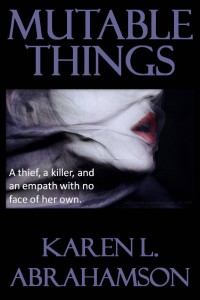
2. Create good covers. This means studying the covers of best sellers in your genre and picking out the things that you think will sell your book. It means finding strong images for your covers because these are the first things that prospective readers see.
3. Write good blurbs/back cover copy. This is the second thing that readers see about your book. Is it interesting? Is it active? Does it raise a question a potential reader might want answered?
4. Within your e-book whether short story or novel, include links to other writing you have for sale. This can be as simple as listing other stories/novels available for sale. It would be better if you included links in the story that will take the reader directly to the other story/novel, so that the reader has the fewest number of clicks necessary to purchase your other material.
5. Include excerpts. This is something I am just starting to do. This means including the first chapter or two of another, similar novel/story, so that the reader can sample it. Hopefully you have good openings and the reader will come to the end of the sample and want to read on. There’s where you insert the link(s) to where the reader can purchase the other book.
6. Loss leaders. If you have short stories that either include the characters in your novel , or are in a similar vein to your novel (e.g. same world, or genre), you can try putting the short story up for free with the free excerpt to the novel attached. A number of friends are finding good success with this. Similarly, if you are writing a series and have the second or third (or fourth etc.) novel coming out, you can sell the first novel in the series at a cheaper price for a limited time.
7. Free Fiction on your website. You can also put short stories like loss leaders up on your website to encourage people to come and read, and then purchase other writing through links on your website.
8. Book cards. (okay, this involves some upfront money, but I still thought I’d include it.) This is a relatively new idea that hasn’t been put in place too much yet, but it involves having gift cards printed for your book and packaged in such a way that they can be sold in book stores. A Canadian company is experimenting with this as are a couple of professional writers I know. These cards can also serve as loss leaders that could be sent to book bloggers or reviewers, or they could be given for free at conferences, or they could be marketed in books stores.
So those are some of the things you can do to market e-books. For POD there are another few options, but these options generally require you to have more than a few books available.
1. Create advertisements for books. If any of you have been at Science Fiction conventions, you’ll recall how there are tables with fliers about upcoming or available books. You can do this too, by emulating book advertisements in magazines or publisher’s catalogues. If you have mastered the process of creating a book for POD, you can certainly create a book flier. These can be distributed at conferences or other book fair events you attend.
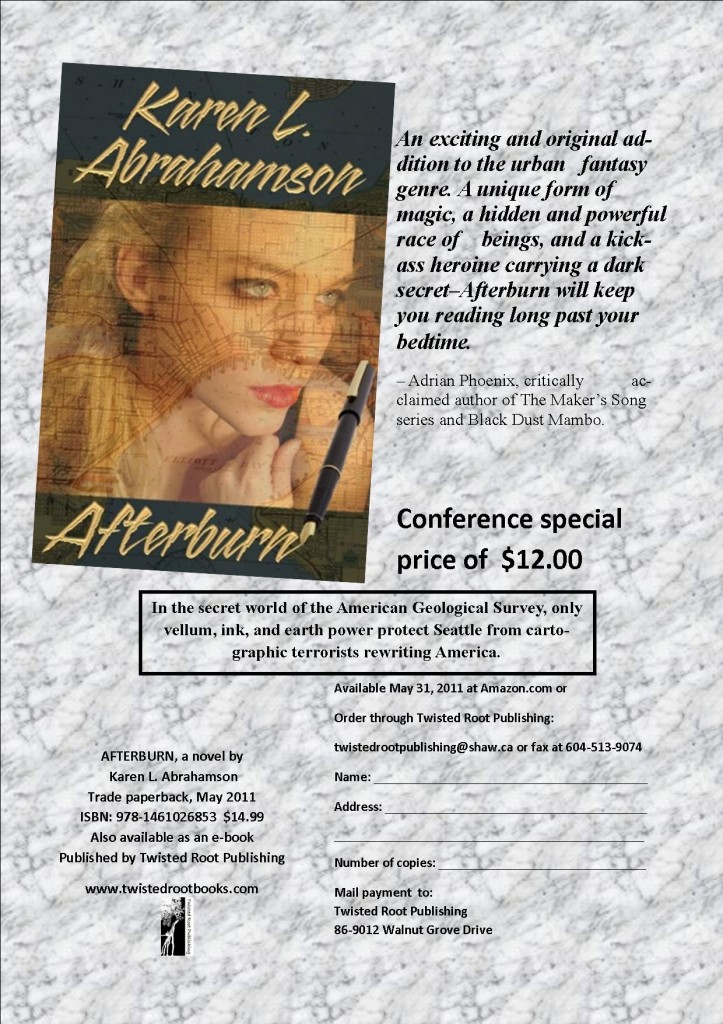
2. Use your local libraries. Often libraries like to support local writers. Approach them about ordering your books. Alternatively offer to donate some.
3. Take advantage of opportunities at conferences etc. to sell your books and promote yourself. If there are opportunities to sell your books then make copies available for sale. Have fliers of your soon-to-be-available books to pique people’s interest. Get on speaker’s lists to talk about your books or related topics and be gracious and interesting when you talk.
4. Approach local bookstores to determine their interest in local authors. I know of at least one local chain that has a policy of supporting local writers and carrying their books. Make sure they know about your work. Take them samples. Which brings to me the biggy:
5. Create a publisher’s catalogue of work available. This includes all the books available from your indie publishing company. Usually this should be at least ten different novels and anthologies. (Remember, you can create anthologies from your short stories, including the freebies.) This means that you create a full color booklet that can be distributed to bookstores locally or even farther afield either through hand delivery or mail out. The big thing here, like with covers, is to ensure your catalogue is professional looking and clearly spells out how and where to find your in-print books.
So those are some options for indie publishers to market their books, whether e-books or print. I haven’t tried them all, but I’m working on it. So what other strategies have you tried and how have they worked for you?
